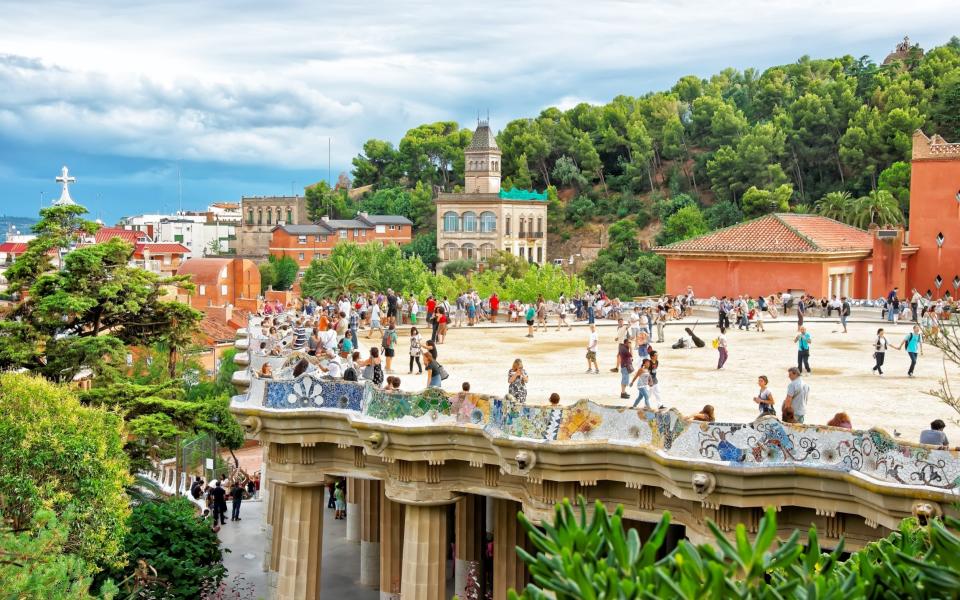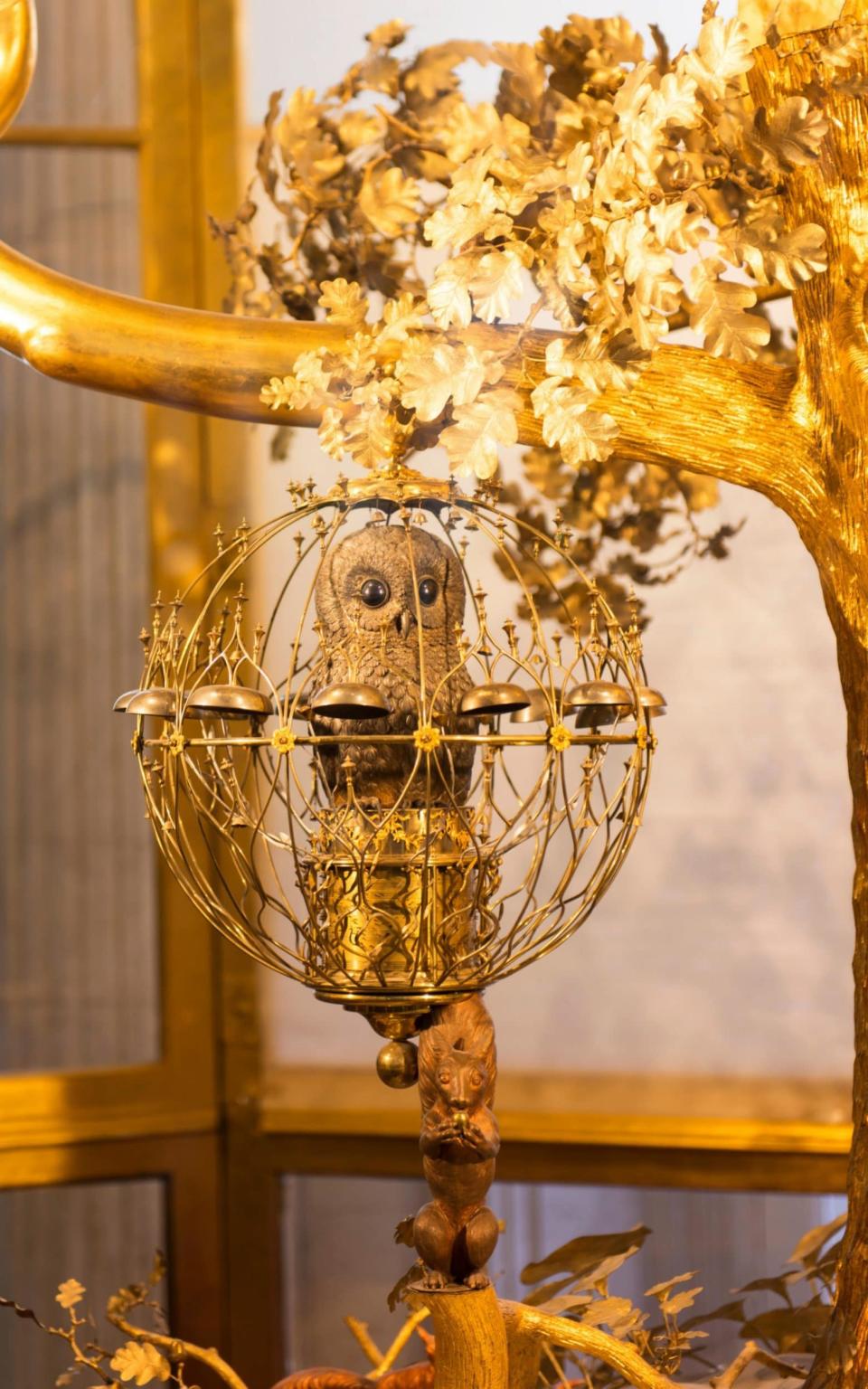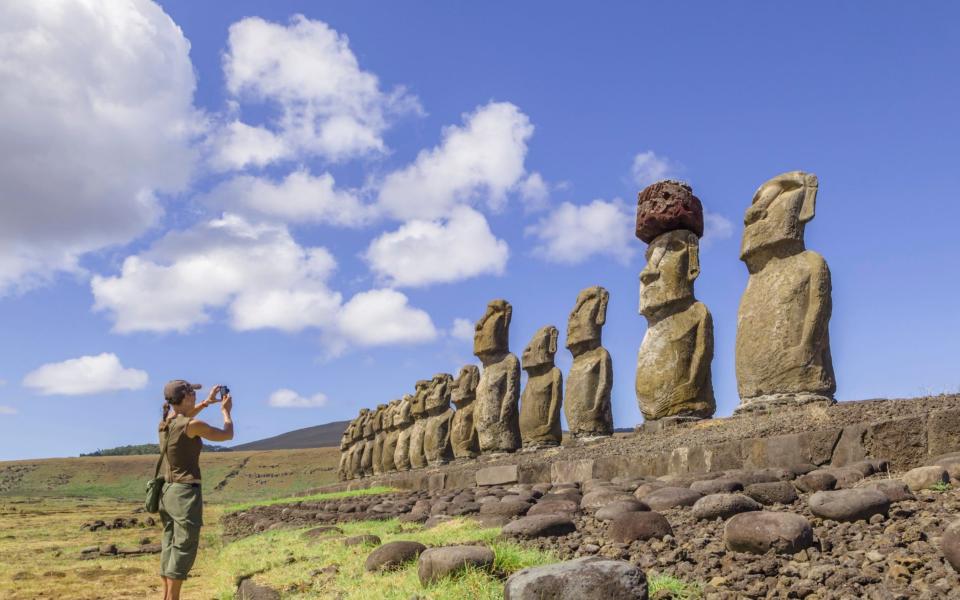Three tourism icons you must see in your lifetime

Welcome to the second instalment of our journey around the world in 80 objects – things, great and small, famous and obscure, which shed a particularly revealing light on a place or culture. Two weeks ago, we kicked off with our first 10, and here are three more.
11. The Serpentine Bench, Barcelona
It suits the enigmatically eccentric character of Barcelona’s most celebrated architect that his two most famous designs in the city are about as far apart in scale and grandeur as it is possible to get. They are a fantastical cathedral and a park bench.
The Sagrada Familia, with its strange organic cluster of conical towers, remains unfinished 139 years after work began on the concrete structure. Even in this uncompleted state, it has become the biggest visitor attraction in the city. Rather more subtle is the impact of the Serpentine Bench in Park Guell. But in its way, it is just as radical, just as inventive and has had just as great an influence on the everyday life of Barcelona’s citizens, as the cathedral we most associate with him.
Park Guell is set out on a hillside in the northern suburbs of the city, where it was originally conceived as part of a housing development at the beginning of the last century. In fact, the concept behind the project was based on new ideas about social housing and model towns, which were being pioneered in England at the time, including garden cities – which led to the building of Letchworth and Welwyn.
The park itself was dreamed up by the industrialist Eusebi Güell, who commissioned Gaudi to help with the design. Ultimately, the project failed and only two houses were actually constructed, one of which was bought by Gaudi and became his home for several years.
But the park was completed by 1914 and is now a public space. It has been a huge success, a green lung in the city suburbs offering wonderful views out over the Mediterranean. At its heart, at the top of the main stairways and framing one end of a large open terrace – where you would expect to see serried ranks of conventional seats – is the Serpentine Bench.
But Gaudi and his collaborator Josep Maria Jujol shunned convention and made sure it struck the keynote for the whole park. Supposedly in the form of a sea serpent, the bench is really a long, continuous series of tight regular curves that double back on each other like the frills of a ruff, around three sides of the terrace. It’s a typical example of the influence of organic forms on Gaudi’s designs, but also of their human scale.
The curves form little intimate enclaves where people can sit and talk, or quietly fall asleep in the Catalan sun. It also reflects his characteristic exuberance, for the entire bench is decorated with mosaics made from thousands of broken pieces of white and brilliantly coloured tiles.
Park Guell (parkguell.barcelona)

12. The Peacock Clock, St Petersburg
Every Wednesday afternoon in the Hermitage Museum in St Petersburg, a crowd gathers around a large glass display case in the Pavilion Hall, right in the middle of the former imperial palace complex. It’s the highlight of the museum’s week, the moment when one of its most famous exhibits – the peacock clock – comes to life.
As the bells start to chime, the golden peacock, perched on the gilded boughs of an oak tree at the centre, lifts its tail, opens its beak, arches its neck and does a pirouette on its perch. Meanwhile, on a branch below, an owl swivels its head, blinks its eyes and shuffles its feet. Then, as the peacock finishes its dance, it looks down to a cockerel, which lifts its head and crows.
It’s a mesmerising sequence of incredibly fluid and detailed movements, but the seductive charms of the mechanisms are more than just a tourist attraction. They are witness to one of the great love affairs of imperial Russia and a high point of British ingenuity.
The clock was made in the 1770s, during the peak of a Europe-wide fashion for exotic clockwork automata by the greatest exponent of the time, the English goldsmith James Cox. His elaborate automata were prized across the continent and made famous in his own private museum – the Spring Gardens – which displayed many of his mechanical animals, birds and human beings. The peacock clock is now the only large-scale example still working in its original form.
And what about the love interest? That was the passionate affair between Catherine II, Russia’s greatest empress, and her favourite (and probably her secret husband), prince Grigory Potemkin, who eventually became commander in chief of the Russian armies. Potemkin, an anglophile and enthusiast for bling, commissioned the clock as a gift for his lover.
Ironically, he never saw it working and Catherine never took delivery of the peacock herself. It arrived at the prince’s palace, boxed and dismantled, in 1781, but no one managed to get it assembled and working until 1794, three years after his death. Catherine herself was to die just before it was finally installed in the Hermitage. But there it remains, a glittering reminder of a golden age of Russian history.
Hermitage Museum (hermitagemuseum.org)

13. The Easter Island Statues, Rapa Nui
Easter Island, or Rapa Nui, is a tiny speck only 14 miles by seven miles at its widest point, in an empty stretch of the South Pacific Ocean. It is so isolated that the nearest inhabited island, Pitcairn, is more than 1,000 miles to the west, while the coast of Chile is 2,200 miles in the opposite direction.
Yet Rapa Nui is home to one of the single most distinctive – and mysterious – artistic traditions in the world: hundreds of stone statues, or Mo’ai, carved from volcanic tufa, standing like strange sentinels all over the island. Most are set on stone plinths on the hillsides around the coast, facing inland. A few were erected in lines, including the seven Ahu Akivi, which stare silently out to sea, perhaps welcoming, perhaps warning those approaching.
Most bizarre are the many that remain in and around the original quarry at Rano Raraku. Some are unfinished, some are completed but now sunk up to their necks in the subsoil. Others have toppled on their backs. All have heavily stylised faces – with truncated bodies, oversized heads, heavy overhanging brows, broad flat noses and square jaws. Many have empty eye sockets but the impression they create is a false one. These statues were once fitted with eyes made of white coral: one had its intense, wide-eyed stare restored in 1979. This one wears a high cylindrical hat, or pukao, made of red stone, balanced on its head. About 100 of these head dresses were once placed on the statues.
The pukao probably represented the hairstyle worn by high-status islanders, but part of the fascination of the Mo’ai is that we know very little for sure. We do know that they were carved, moved and erected between about 1200 and 1500 by Polynesians who had settled the island, and then, about 500 years ago, production suddenly stopped.

And while there are many local legends and stories, as well as archaeological theories, about the phenomenon, there are no verifiable accounts and very little reliable evidence.
Almost nothing is certain. Recent research suggests that they were erected near sources of fresh water, so were placed close to population centres. But we don’t know what the statues represent, why they were made, why they were positioned where they were, nor how they were moved from the quarries to their locations. They may have been symbolic, or represented ancestral spirits or figures of authority. They may have been seen as guides or protectors. We will probably never know for sure – and that uncertainty will always be part of their strange power to impress.
Easter Island (chile.travel)


